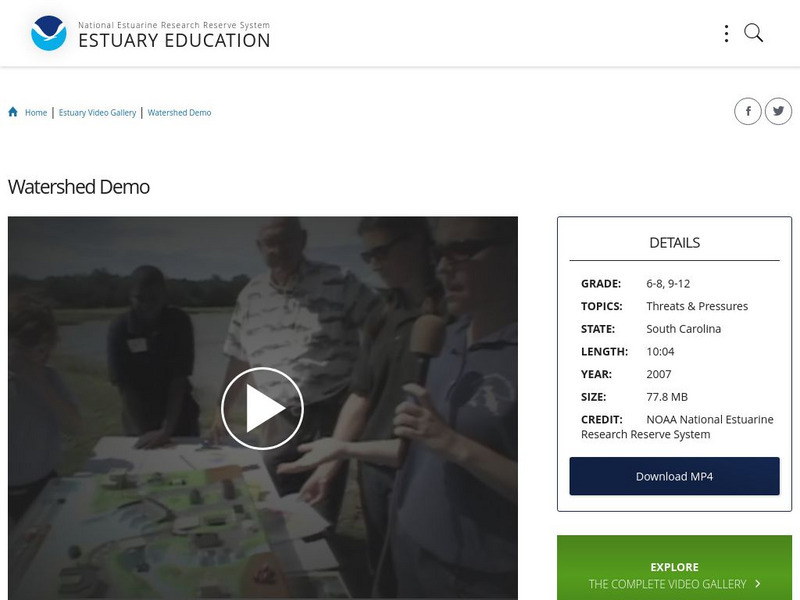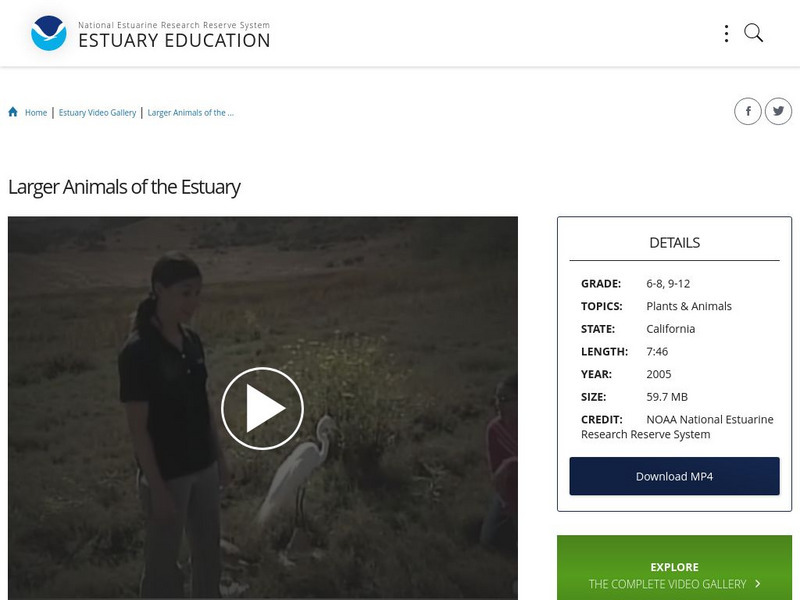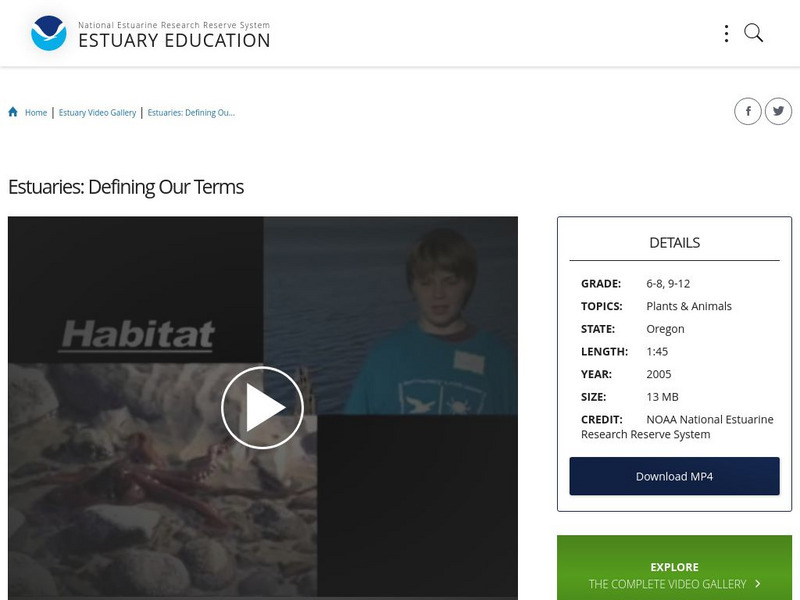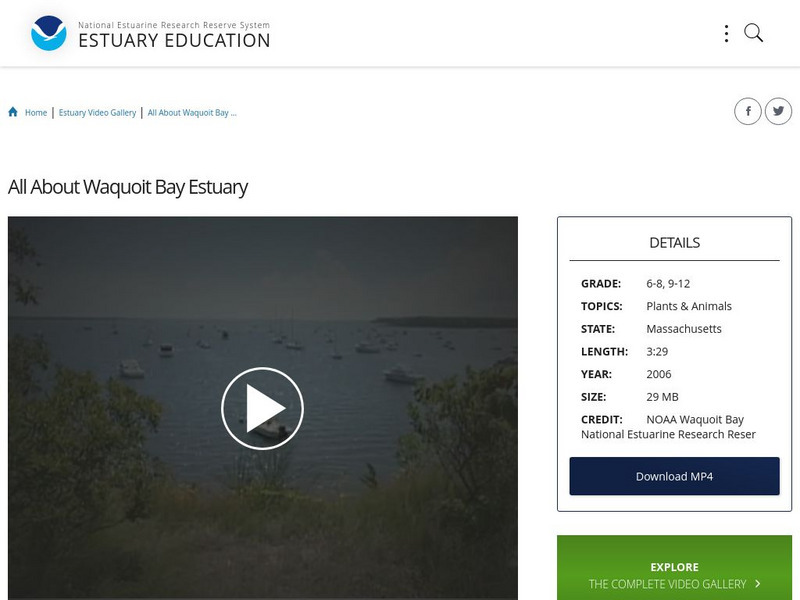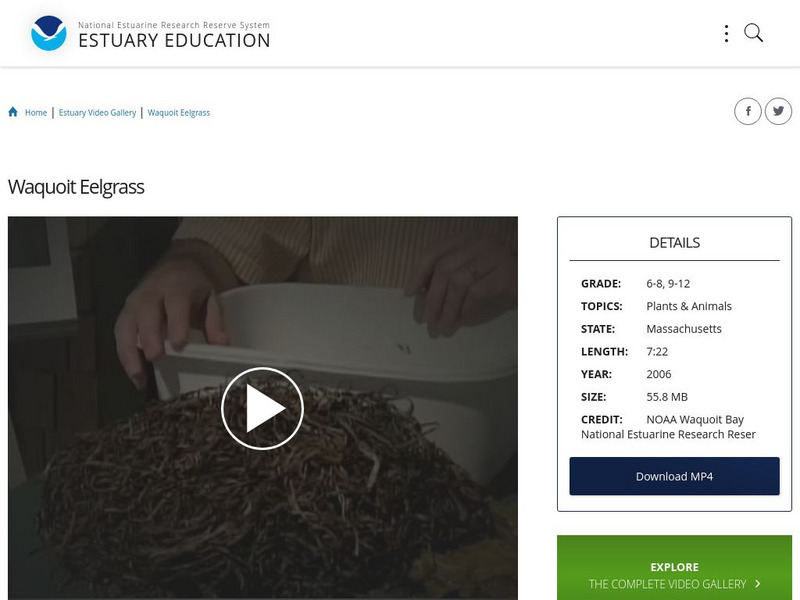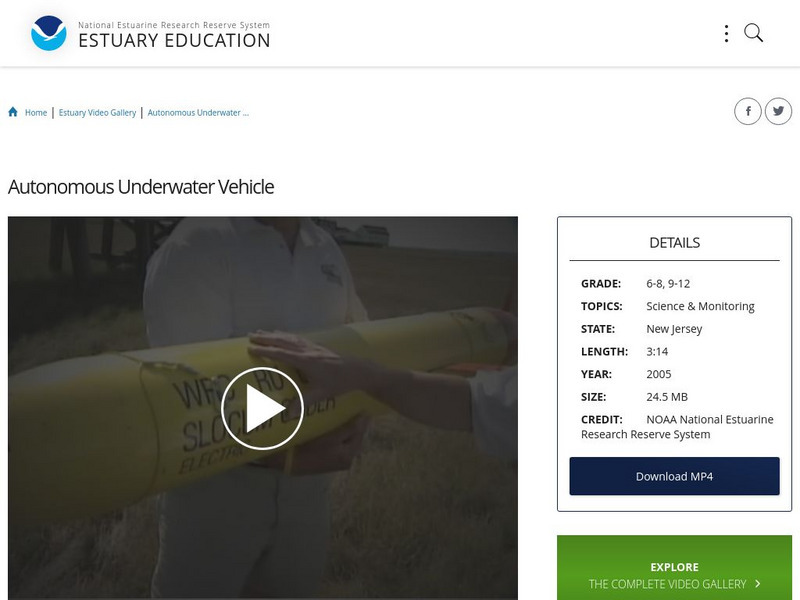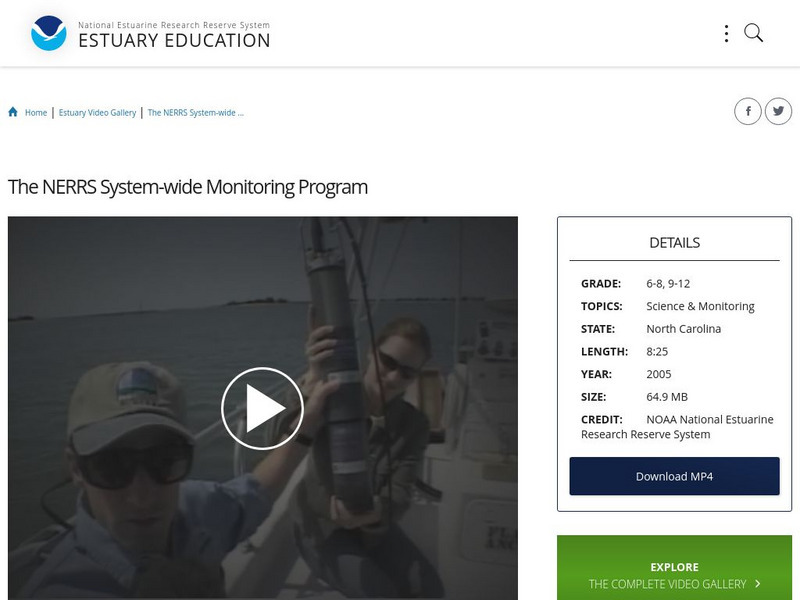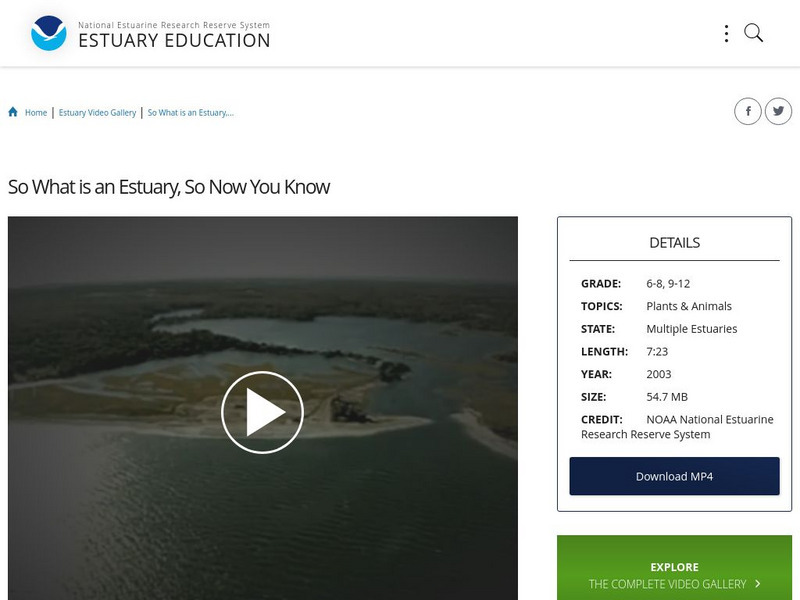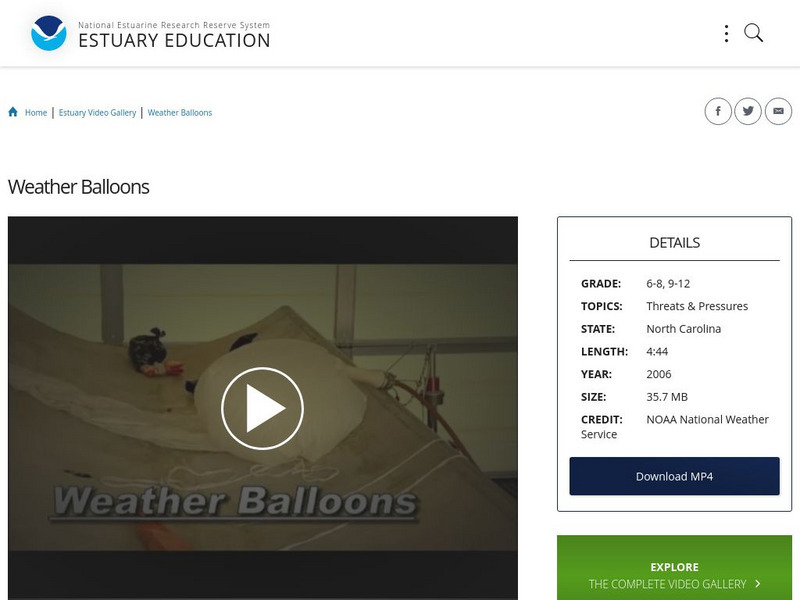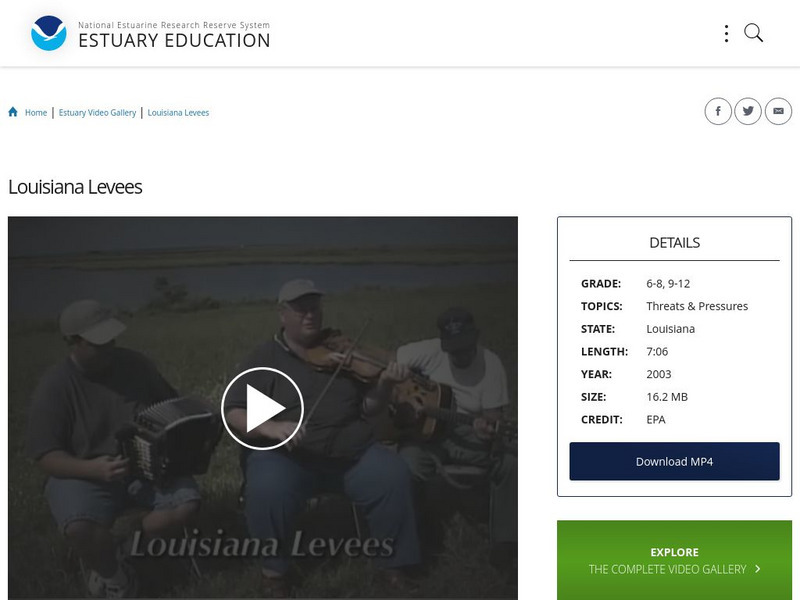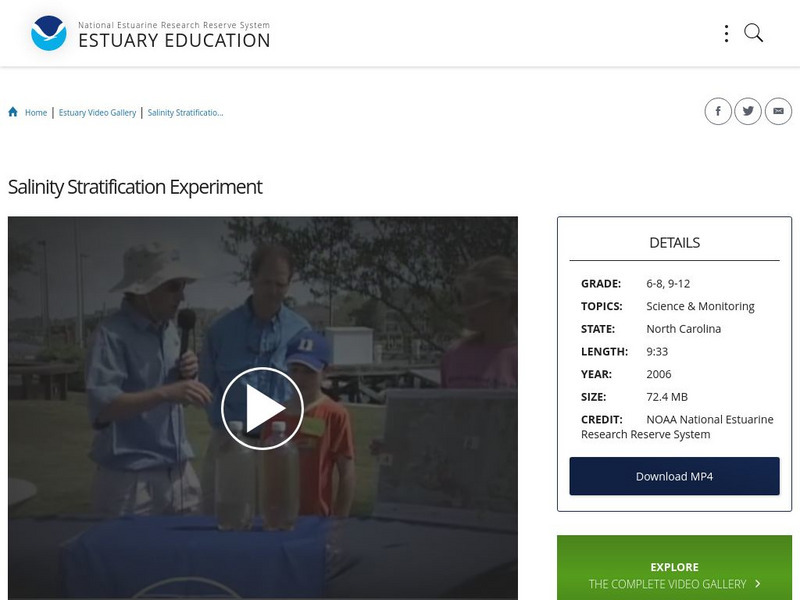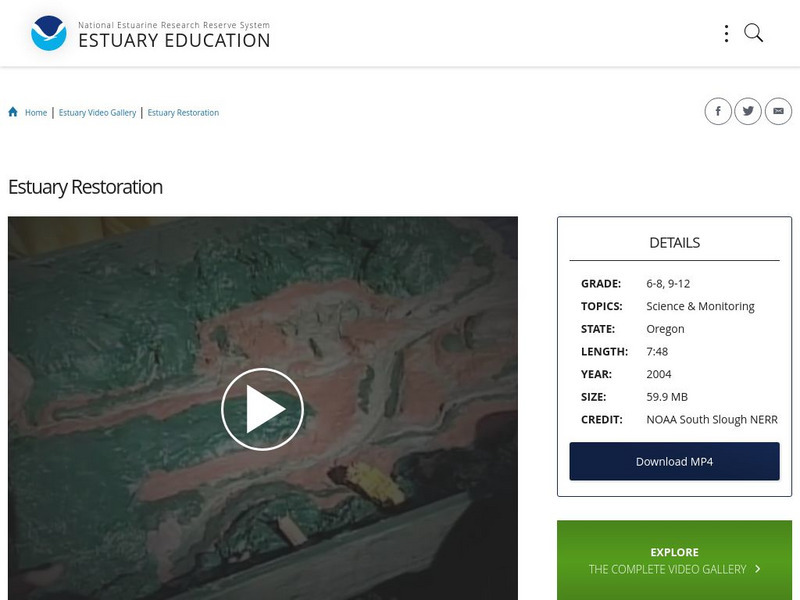NOAA
Noaa: Estuary Education: Urban Estuaries: Water Quality Testing
Students measure water quality in the NY-NJ Estuary using simple tools. Scientists explain the importance of good water quality and talk about what causes water quality declines. [5:44]
NOAA
Noaa: Estuary Education: Watershed Demo
A quick, by necessity, discussion of watersheds with a great demo using a very good watershed model (Enviroscape) plus a couple of student tips. [10:04]
NOAA
Noaa: Estuary Education: Horseshoe Crabs
A close-up look at the horseshoe crab, an ancient estuary animal. [10:14]
NOAA
Noaa: Estuary Education: Estuary Scavenger Hunt
Follow this group of students through their scavenger hunt in the estuary. Take a look at the living and nonliving things that make this ecosystem a special place. [9:38]
NOAA
Noaa: Estuary Education: China Camp State Park
California's China Camp State Park is an important environmental and historic site which has a natural watershed along the shores of San Francisco Bay. Features in the estuary include an extensive intertidal salt marsh, meadow, and oak...
NOAA
Noaa: Estuary Education: Larger Animals of the Estuary
Join a naturalist who studies the large animals and native birds found in the estuarine areas. Spend the day exploring the San Francisco Bay Estuary with this group of students. [7:46]
NOAA
Noaa: Estuary Education: Combined Sewer Overflow
A quick overview of how a combined sewer overflow system works, and why heavy rains can be bad for estuaries. [1:42]
NOAA
Noaa: Estuary Education: Building a Salt Marsh
Find out how a salt marsh can be built or rebuilt. This video explains how plants are chosen to restore a salt marsh near New York City. [3:52]
NOAA
Noaa: Estuary Education: Tale of Two Estuaries
A detailed look at the life inside two very different estuaries in Oregon: the South Slough and Tillamook estuaries. [8:04]
NOAA
Noaa: Estuary Education: Estuaries: Defining Our Terms
Students quickly run down the major aspects of what makes an estuary, watershed, habitat, and food web. [1:45]
NOAA
Noaa: Estuary Education: Plankton Parade
Students learn about the importance of zooplankton and phytoplankton, and why different plankton species are the basis of the estuary food web. [3:25]
NOAA
Noaa: Estuary Education: Saving the Tijuana Estuary
The estuary stands as the last barrier between the Pacific Ocean and pollution. Its mix of plants and silt acts as a filter that purifies contaminated inland rain and flood waters before they reach the ocean. [3:47]
NOAA
Noaa: Estuary Education: All About Waquoit Bay Estuary
A quick overview of the Waquoit Bay Estuary, including what an estuary is and what makes this estuary unique. [3:29]
NOAA
Noaa: Estuary Education: Waquoit Eelgrass
Eelgrass is one of the most important indicator plants in the estuary. Learn about how the health of this plant is often a measure of the health of the ecosystem. Also includes a look at how septic systems impact estuary plants. [7:22]
NOAA
Noaa: Estuary Education: Sampling Seagrass
A look at various types of estuary grasses and the animals that are sheltered in this habitat, plus a look at the methods scientists use to study these grasses. [6:10]
NOAA
Noaa: Estuary Education: Autonomous Underwater Vehicle
Learn about the Slocum Glider, a cruise missile and designed to explore the ocean for months at a time with no human direction. [3:14]
NOAA
Noaa: Estuary Education: Phytoplankton
Young students learn about plankton (in particular phytoplankton) and why it is vital to life on this planet. [9:59]
NOAA
Noaa: Estuary Education: The Nerrs System Wide Monitoring Program
Learn about the SWMP Program (System Wide Monitoring Program) and see how high-tech underwater equipment helps keep track of conditions in the estuary at all times. [8:25]
NOAA
Noaa: Estuary Education: So What Is an Estuary, So Now You Know
Produced by the Association of National Estuary Programs as a fun explanation of what estuaries are and why they are important. [7:23]
NOAA
Noaa: Estuary Education: Weather Balloons
See how weather forecasting and weather research are conducted using weather balloons. Find out how these floating instruments work, and what scientific the data they send back to meteorologists. [4:44]
NOAA
Noaa: Estuary Education: Louisiana Levees
Interview with Windell Curole, Levee Manager, South Lafourche Parrish one year before Hurricane Katrina. He discusses living in and around the estuary, and how the levee system affects the water quality there. [7:06]
NOAA
Noaa: Estuary Education: Salinity Stratification Experiment
Learn a little about salinity differences in the estuary and watch a really cool but simple experiment to demonstrate salinity stratification. You can try this at home! [9:33]
NOAA
Noaa: Estuary Education: Estuary Restoration
A look at how and why the South Slough estuary has been changed by human use, and how we are now trying to rebuild or restore the estuary to original condition. Specialized techniques for restoration include use of high explosives. [7:48]
NOAA
Noaa: Estuary Education: Water Quality Specifics: Measuring Nitrogen
See how students use classroom tools to measure estuarine water quality. Students sample estuary water for nitrogen using the Colorimeter. [3:03]

